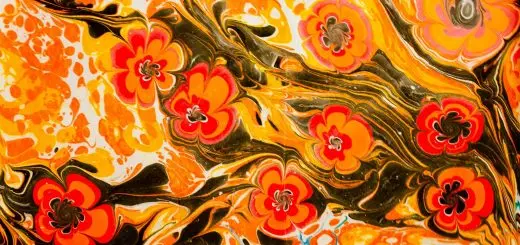The Curse of the Crying Boy Painting

Looking for more amazing products? Check out our online store and explore our collection here! Happy shopping!
Before diving in, please note: This post is for informational purposes only. If you’d like to know more about how we approach topics, feel free to check out our friendly Disclaimer Page.
Hey there, amazing readers! 
We’re committed to delivering quality posts, and your support (even just sticking around despite the ads) means everything to us. So, bear with us, and thanks for helping us keep the good vibes rolling. Now, on to the fun stuff!
TRANSLATE BUTTON AT THE END OF THE ARTICLE
A Quick Overview
The Crying Boy painting has captured imaginations and raised eyebrows for decades.
This seemingly innocuous artwork, depicting a teary-eyed child, is shrouded in a strange and eerie legend.
Many claim that it carries a curse, leading to misfortune and disaster for its owners.
In this article, we’ll dive deep into the story of the Crying Boy, exploring its origins, the artist behind it, and the myriad incidents that have tied it to a supposed curse.
We’ll also look at the psychological aspects of why we fear curses, the cultural impact of this peculiar phenomenon, and how it has become part of pop culture.
Introduction to the Enigmatic Crying Boy Painting
The Crying Boy painting is an image that has stirred a whirlwind of fascination and paranoia.
At first glance, it looks like a simple portrait of a young boy, tears streaming down his face, with an expression that tugs at the heartstrings.
However, for those who know its backstory, the painting represents much more—it’s a symbol of superstition, tragedy, and a touch of the macabre.
People from various walks of life have reported strange occurrences linked to this artwork.
From house fires to unexplained accidents, the tales surrounding the Crying Boy raise the question: is it just a painting, or does it carry some unexplainable weight?
Over the years, countless theories and urban legends have sprouted up, adding to its mystique.
Collectors and art enthusiasts often find themselves torn between admiration for the painting itself and the haunting stories that accompany it.
Are we drawn to the drama and intrigue, or is there something deeper at play?
The conflicting emotions regarding the Crying Boy reflect a broader human tendency to explore the unknown, driven by curiosity and sometimes by a hint of fear.
The appeal of the Crying Boy lies not just in its artistic qualities but in its ability to evoke a response—a blend of empathy, discomfort, and wonder.
Whether you see it as a mere artwork or a harbinger of doom, its presence sparks conversation.
So, let’s step back and look at the artist behind this controversial piece.
The Artist Behind the Crying Boy: A Brief Overview
The Crying Boy was painted by Giovanni Bragolin, an Italian artist born in 1911.
Bragolin was known for his series of paintings featuring children, particularly those with tearful expressions.
His work gained popularity in the post-World War II era, a time when many were grappling with loss and grief.
The emotional depth in his paintings struck a chord with the public.
Bragolin’s signature style featured vibrant colors and expressive brushstrokes.
Each of his child portraits tells a story, capturing raw emotions that resonate with viewers.
However, the Crying Boy stands out among his works, not just for its artistic merit but for the dark legend that enveloped it.
Despite its popularity, Bragolin himself seemed to have a complicated relationship with the painting.
He reportedly expressed discomfort about the tales surrounding the Crying Boy and the misfortunes attributed to it.
The artist’s life was as colorful as his canvases, filled with both acclaim and controversy.
Today, Bragolin’s work is often sought after by collectors.
However, the Crying Boy remains his most infamous creation.
As we explore the curse associated with this painting, it’s essential to recognize the man behind the brush and the impact he made on the art world.
The Legend: How the Curse Took Shape Over Time
The legend of the Crying Boy curse began to take shape in the 1980s, fueled by sensational stories and media coverage.
Various reports connected the painting to a series of unfortunate events, particularly house fires.
The narrative suggested that homes housing the Crying Boy would inevitably face disaster, leading to an increase in superstition surrounding the artwork.
The tale took on a life of its own when a British tabloid published a story linking the painting to several house fires.
The article claimed that firefighters often found the painting unscathed amidst the charred remains of homes.
This was an eye-catching headline that captivated readers and sparked widespread fear.
As the stories circulated, people began to share their own experiences.
Many claimed to have witnessed strange happenings after acquiring the painting.
The more these stories spread, the more the curse seemed to solidify in the public consciousness.
It’s interesting to note how urban legends often morph over time.
In the case of the Crying Boy, the curse expanded.
Some said that the painting brought bad luck, while others warned it could cause harm to children.
The original story of misfortune transformed into an all-encompassing tale of doom.
The legend’s evolution showcases how folklore can thrive on human emotion.
The fear of loss, misfortune, and the unknown adds layers of depth to the curse surrounding the Crying Boy.
Let’s take a look at some notable incidents that have fueled this myth.
Notable Incidents Linked to the Crying Boy Painting
Over the years, numerous incidents linked to the Crying Boy painting have made headlines, adding fuel to the fire of its infamous reputation.
One of the most widely cited events occurred during a fire in the UK in the 1980s.
Firefighters reported finding the painting intact while the rest of the home was reduced to ashes.
This incident alone sent chills down the spines of many and solidified the painting’s status as a harbinger of doom.
Another case involved a family who claimed to experience a series of unfortunate events after acquiring the artwork.
Allegedly, they encountered everything from minor accidents to significant financial troubles.
The family was convinced that the Crying Boy was to blame and ultimately decided to part ways with it, hoping for relief from their string of misfortunes.
Moreover, stories emerged of individuals who, after first acquiring the painting, found their lives spiraling into chaos.
Some reported health issues, while others faced familial strife.
These anecdotes painted a vivid picture of the painting’s dark power and added to the collective anxiety surrounding it.
Interestingly, the curse seemed to resonate particularly strongly during times of crisis.
The 1980s, marked by economic uncertainty, saw many individuals seeking explanations for their struggles.
The Crying Boy’s curse offered a convenient scapegoat.
As you can see, the legends surrounding the painting are tied closely to personal experiences.
They are a blend of anecdote and folklore, illustrating how tales can evolve and gain traction in society over time.
But what about the painting’s rise to fame?
Let’s delve into that.
The Painting’s Rise to Fame in the 1980s
The 1980s marked a turning point for the Crying Boy painting, transforming it from a relatively obscure artwork to a household name.
The heat of the curse narrative, combined with the painting’s emotional appeal, created a perfect storm for its popularity.
Suddenly, everyone wanted a piece of the action, for better or worse.
The media played a significant role in this rise.
Sensational stories and horror-filled headlines attracted attention.
As more people learned about the painting and its supposed curse, they became curious.
Stores began to stock the painting, and it was not uncommon to see it adorning the walls of homes across the UK.
Collecting the Crying Boy became a trend, almost akin to a rite of passage for those intrigued by the supernatural.
Some saw it as a conversation starter, while others viewed it as a potential treasure with a dark twist.
Regardless of motivation, the painting made its way into countless homes, leading to further tales of misfortune and intrigue.
Interestingly, the rise of the painting coincided with a broader cultural fascination with the paranormal and the macabre.
Movies, books, and television shows delving into horror and the supernatural proliferated during this time, further fueling interest in the Crying Boy curse.
In a way, the 1980s served as the crucible for the painting’s legend.
It became emblematic of a culture that was grappling with fears and uncertainties, seeking answers in the unexplainable.
So what drives this belief in curses?
Let’s take a look at the psychology behind it.
The Psychology of Belief: Why Do We Fear Curses?
Why do we, as humans, become so enthralled with the notion of curses?
The answer often lies in our psychological makeup.
Fear of the unknown is an intrinsic part of the human experience.
We constantly seek explanations for the inexplicable, especially during tough times.
When faced with adversity, it’s easier to attribute blame to external factors than to confront the harsh realities of life.
Curses, like the one surrounding the Crying Boy, offer a neat narrative to rationalize our fears and misfortunes.
It’s almost comforting to think that our problems stem from a single source, rather than the complexity of existence.
Moreover, the concept of curses taps into our fascination with superstition.
Many cultures have long traditions of rituals and beliefs that revolve around good luck and bad luck.
Whether it’s avoiding walking under a ladder or fearing the number 13, these superstitions provide a framework through which we navigate our realities.
The emotional resonance of stories tied to curses can also amplify our fears.
When we hear tales of misfortune connected to the Crying Boy, we relate to the anxiety of losing something dear or facing unforeseen circumstances.
This emotional connection makes the curse feel more real and potent.
In essence, our belief in curses can often be seen as a coping mechanism.
They help us make sense of chaos and provide a narrative to our experiences.
Now that we have an understanding of the psychology, let’s explore the iconic imagery and themes of the Crying Boy painting.
A Look at the Painting’s Iconic Imagery and Themes
At first glance, the Crying Boy painting captivates with its simple yet poignant imagery.
The central figure—a young boy with large, expressive eyes—evokes a sense of vulnerability and sorrow.
His tears seem almost alive, drawing us in and compelling us to empathize with his plight.
One of the striking aspects of the painting is the boy’s gaze.
It holds a mixture of sadness and innocence, making it hard to look away.
The color palette, predominantly soft blues and earthy tones, adds to the emotional resonance, creating a poignant atmosphere that feels both intimate and haunting.
Thematically, the Crying Boy embodies complex emotions like loss, suffering, and longing.
These themes resonate deeply, particularly in a world filled with grief and heartache.
The painting can be interpreted in various ways—some see it as a reflection of childhood innocence lost, while others view it as a symbol of the burdens children carry.
Interestingly, the painting’s emotional weight amplifies the fear surrounding the supposed curse.
The boy’s tears take on a more sinister meaning.
Are they a warning?
A reflection of the pain that befalls those who own the painting?
The duality of the artwork adds layers to its already compelling narrative.
Additionally, the Crying Boy resonates with universal human experiences.
We all face sorrow and challenges, making it easy to connect with the figure on the canvas.
It serves as a reminder of our vulnerability, evoking both empathy and fear.
This powerful imagery creates a captivating interplay between beauty and darkness.
Now that we’ve examined its themes, it’s time to look at the cultural impact of the Crying Boy phenomenon.
The Cultural Impact of the Crying Boy Phenomenon
The Crying Boy painting has left an indelible mark on popular culture, influencing a variety of media and art forms.
Its haunting imagery and the bizarre lore surrounding it have inspired filmmakers, writers, and artists to explore themes of superstition and the macabre.
In film and literature, the Crying Boy often appears as a symbol of impending doom.
Many horror movies have borrowed elements from the painting, using it to heighten suspense and conjure feelings of dread.
The painting’s dark legend serves as a cautionary tale, warning of the consequences of ignoring the supernatural.
Artistic interpretations have also flourished.
Contemporary artists often reference the Crying Boy, reimagining the figure in new contexts.
Some reinterpret the painting to reflect modern anxieties, exploring themes like childhood trauma or societal neglect.
This evolution of the Crying Boy in modern art showcases its enduring relevance.
The painting has also found its way into memes and social media culture, where its image is often used humorously or ironically.
The juxtaposition of a seemingly innocent child’s face with dark lore creates an interesting dynamic that resonates with a digital audience.
The Crying Boy has become a cultural artifact, embodying our collective fears and curiosities.
In essence, the Crying Boy phenomenon reveals much about our cultural psyche.
It taps into our fascination with the supernatural, our emotional vulnerabilities, and our desire to make sense of life’s mysteries.
So how did this painting become a pop culture icon?
Let’s explore.
How the Crying Boy Became a Pop Culture Icon
The Crying Boy painting evolved from a simple piece of art into a pop culture icon.
Much of this transformation can be attributed to the potent mix of media exposure, urban legend, and the human affinity for the strange and unusual.
The interplay of these factors has solidified its place in contemporary culture.
Television shows, documentaries, and podcasts exploring tales of the supernatural have featured the Crying Boy.
These platforms have introduced the painting to new audiences, reigniting interest in its eerie backstory.
The painting’s connection to urban legends makes it a compelling topic for discussion, sparking curiosity and debate.
Moreover, the Crying Boy has become a common reference point in discussions about curses, art, and the supernatural.
It serves as an accessible entry point for exploring deeper themes of fear, loss, and the nature of belief.
In a world filled with distractions, the simplicity of its story intrigues people and invites them to delve deeper.
As digital culture continues to evolve, the Crying Boy painting remains relevant.
Memes, fan art, and discussions on social media platforms allow for ongoing reinterpretation and engagement.
This fluidity only enhances its status as a pop culture phenomenon, showcasing its ability to resonate across generations.
The painting’s adaptability to various contexts ensures that it remains a topic of conversation.
Whether used in horror narratives, art critiques, or humorous memes, the Crying Boy captures our imagination and invites us to examine our beliefs and fears.
Debunking Myths: Fact vs. Fiction in the Curse
Despite the lore surrounding the Crying Boy, many aspects of the curse have been debunked or exaggerated.
The stories of house fires and misfortunes often lack concrete evidence.
While certain incidents have been reported, they tend to be anecdotal rather than systematically documented, leading to speculation and myth-making.
It’s essential to approach these tales with a critical mindset.
Just because something has been said does not make it true.
The allure of the curse lies in its sensational nature, drawing in those who are curious or fearful.
In many cases, the very act of believing in the curse can create a self-fulfilling prophecy.
Moreover, many of the incidents attributed to the Crying Boy are common occurrences.
Families may experience challenges regardless of the artwork displayed in their homes.
The tendency to link misfortune to specific objects or symbols is a classic example of human pattern recognition, where we seek connections even when none exist.
By examining the evidence and understanding the psychological aspects of belief, we can better navigate the narratives surrounding the Crying Boy.
The painting may evoke fear, but it’s also imperative to remember that it is, at its core, a work of art—not a curse.
Conclusion: Embracing the Mystery of the Crying Boy
The Crying Boy painting is more than just a piece of art; it’s an intersection of emotion, folklore, and cultural impact.
The legend of its curse has captivated audiences for decades, stirring curiosity and fear in equal measure.
While the stories surrounding it may seem unsettling, they reflect our deep-seated fascination with the supernatural and our attempts to understand life’s complexities.
As we sift through the tales and myths, we recognize that the true power of the Crying Boy lies in its ability to evoke feelings and provoke thought.
Whether you view it as a cursed object or simply an intriguing piece of art, its legacy continues to inspire conversations and interpretations.
In a world where we often seek clarity in chaos, the Crying Boy painting reminds us of the beauty and complexity of the human experience.
Embracing its mystery allows us to connect with our fears, curiosities, and the shared tales that bind us all.
So, what do you think?
Is the Crying Boy a mere painting or a gateway to the unknown?

The Enlightenment Journey is a remarkable collection of writings authored by a distinguished group of experts in the fields of spirituality, new age, and esoteric knowledge.
This anthology features a diverse assembly of well-experienced authors who bring their profound insights and credible perspectives to the forefront.
Each contributor possesses a wealth of knowledge and wisdom, making them authorities in their respective domains.
Together, they offer readers a transformative journey into the realms of spiritual growth, self-discovery, and esoteric enlightenment.
The Enlightenment Journey is a testament to the collective expertise of these luminaries, providing readers with a rich tapestry of ideas and information to illuminate their spiritual path.
Our Diverse Expertise
While our primary focus is on spirituality and esotericism, we are equally passionate about exploring a wide range of other topics and niches 

To ensure we provide the most accurate and valuable insights, we collaborate with trusted experts in their respective domains 
Our blog originally focused on spirituality and metaphysics, but we’ve since expanded to cover a wide range of niches. Don’t worry—we continue to publish a lot of articles on spirituality! Frequently visit our blog to explore our diverse content and stay tuned for more insightful reads.
Hey there, amazing reader! 
Check out our store here and take a peek at some of our featured products below! Thanks for being awesome!












